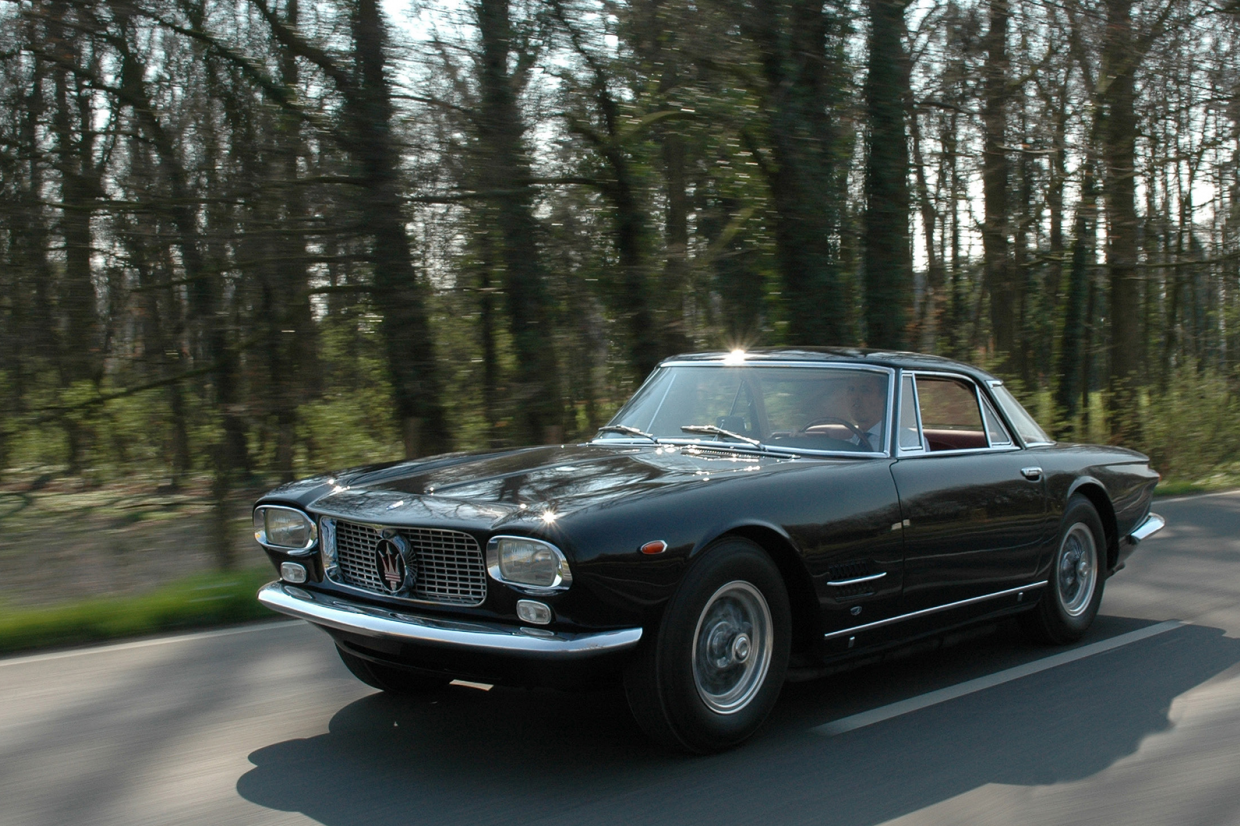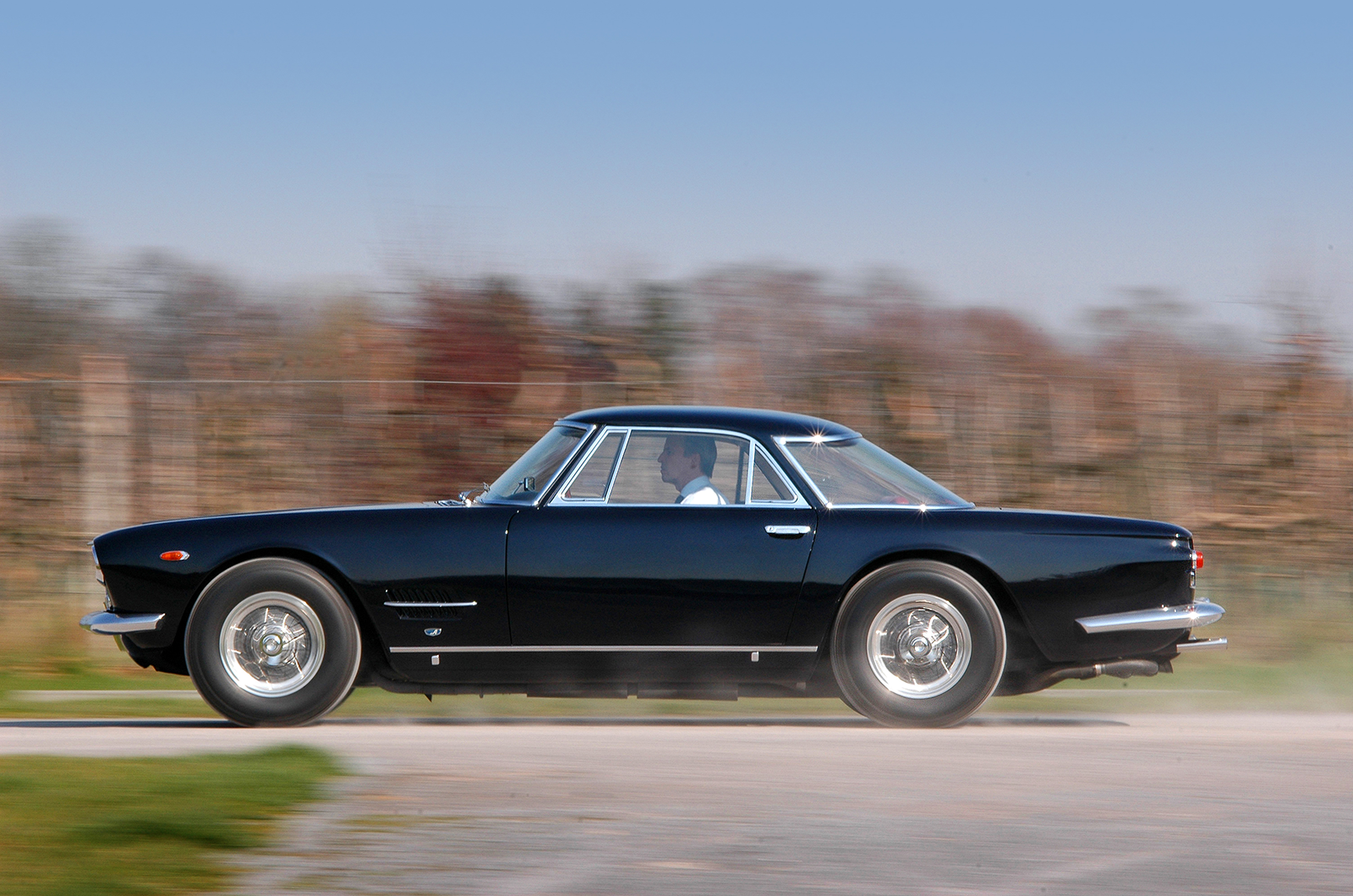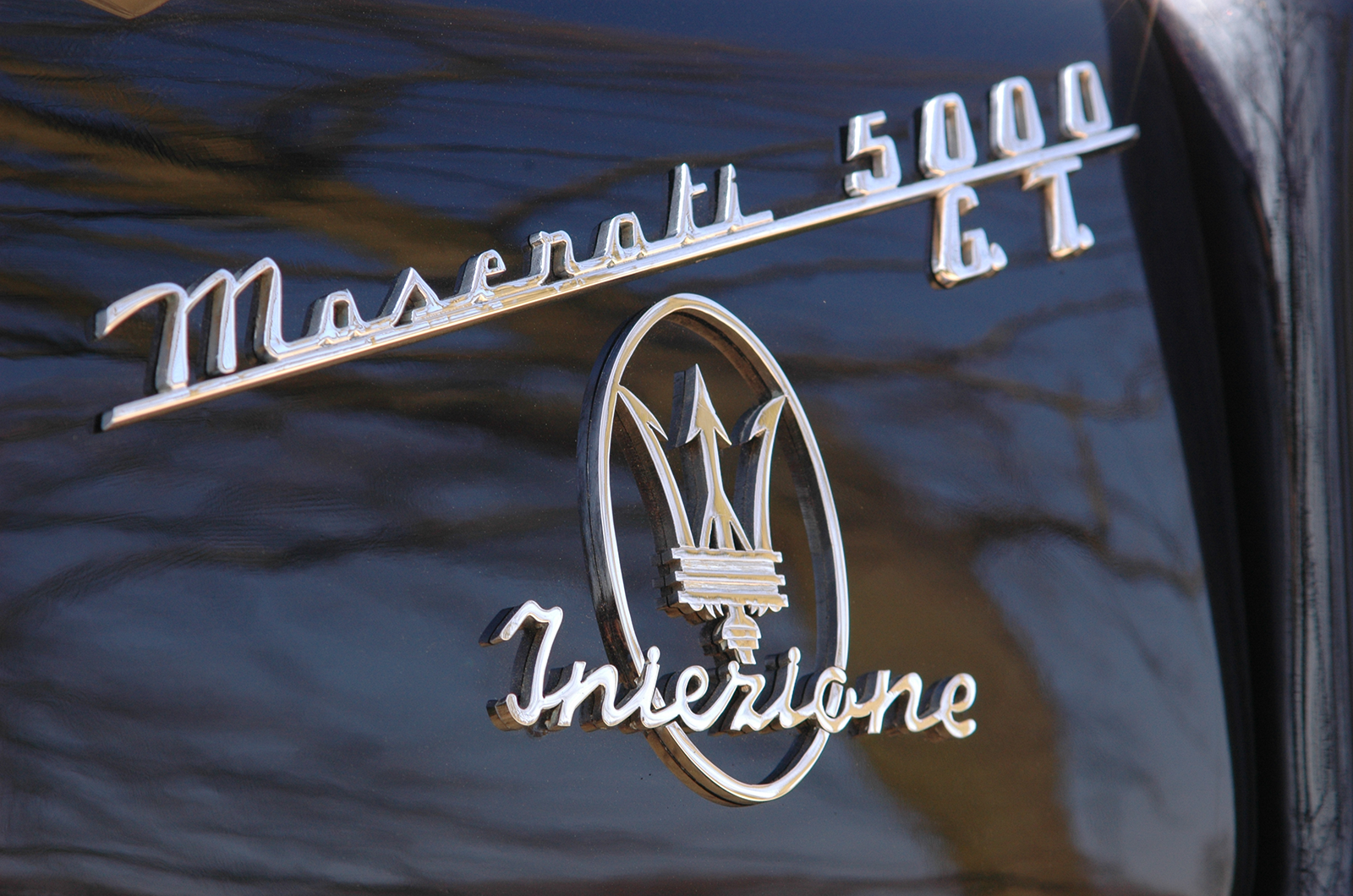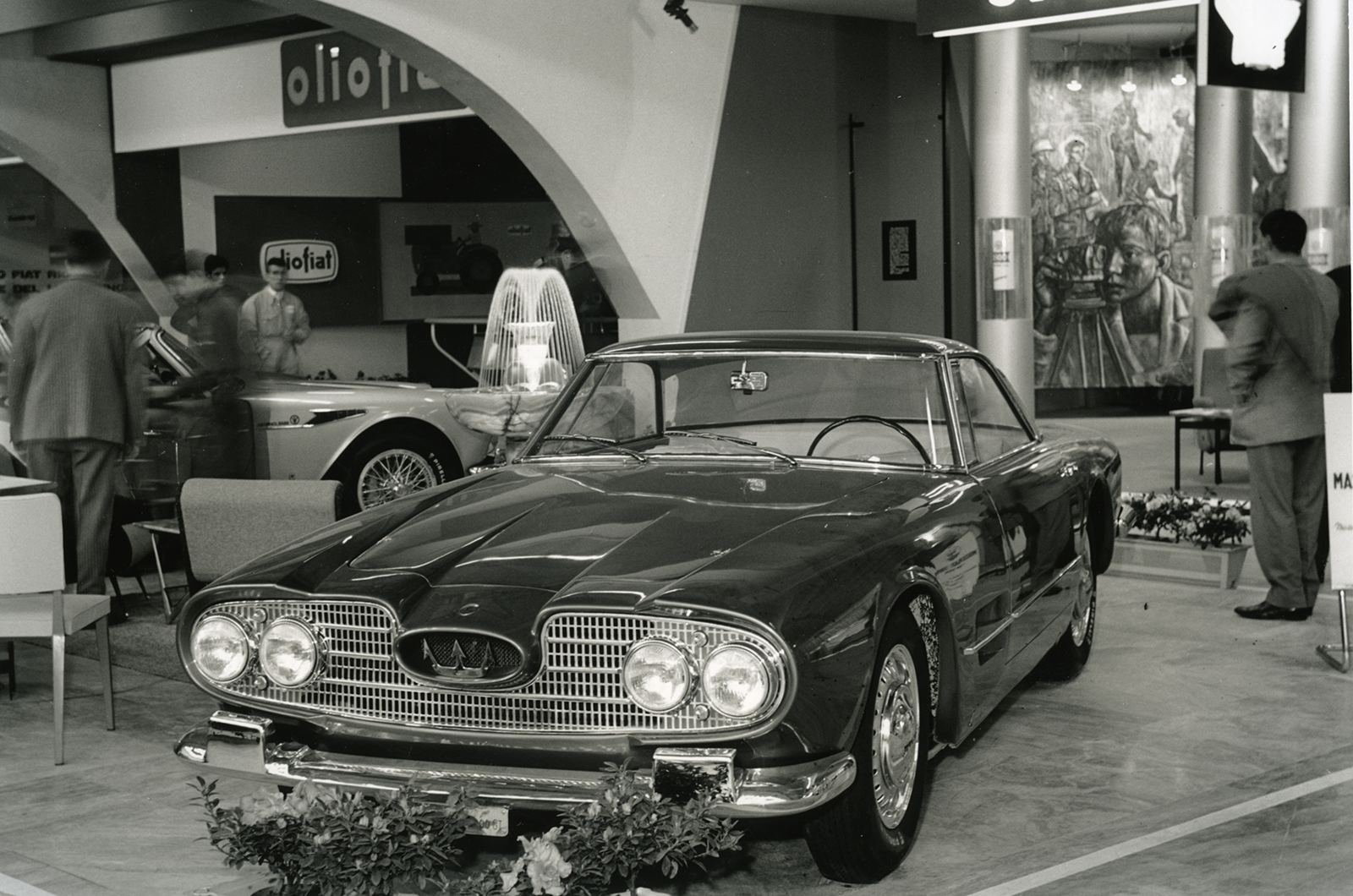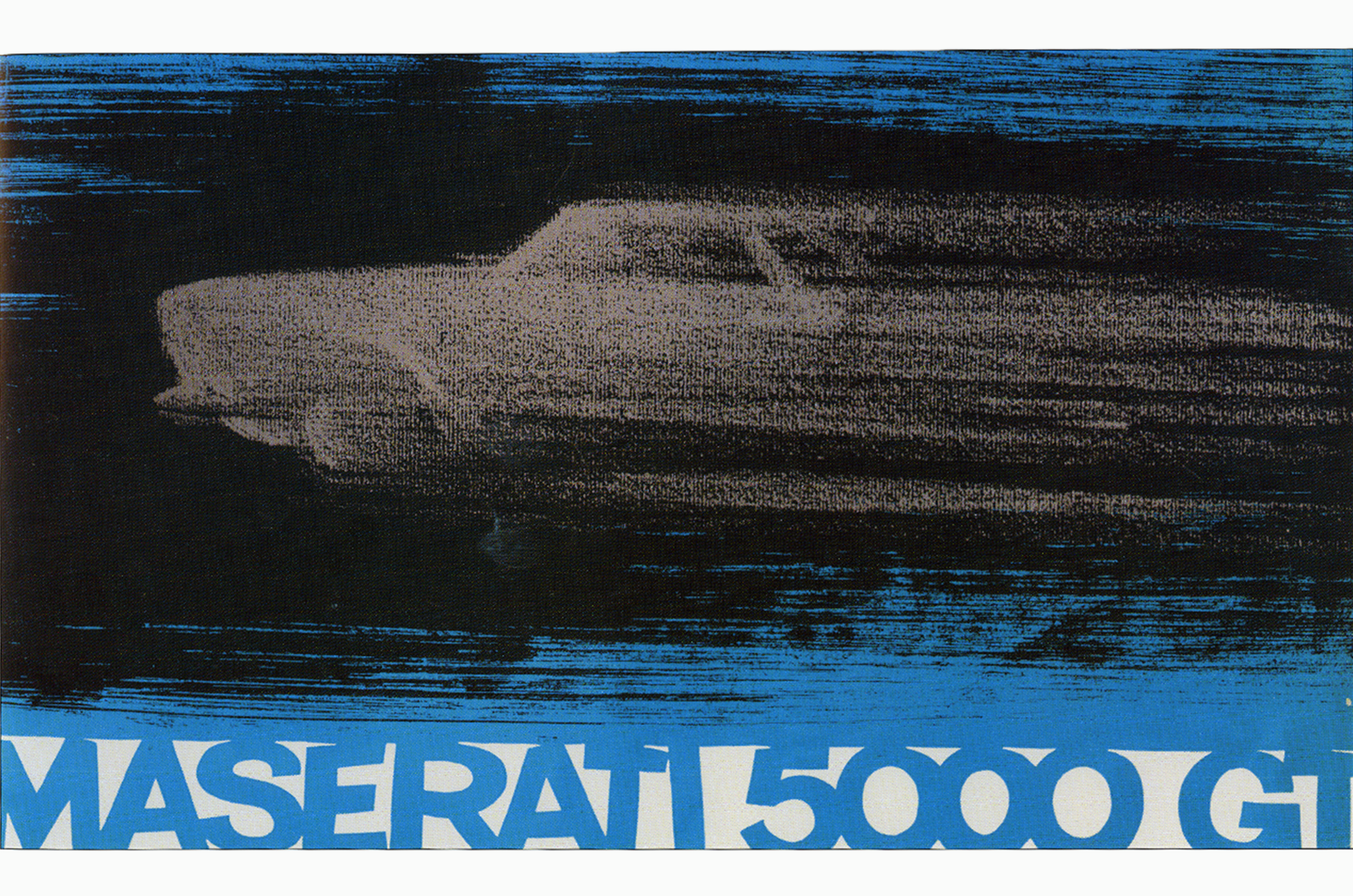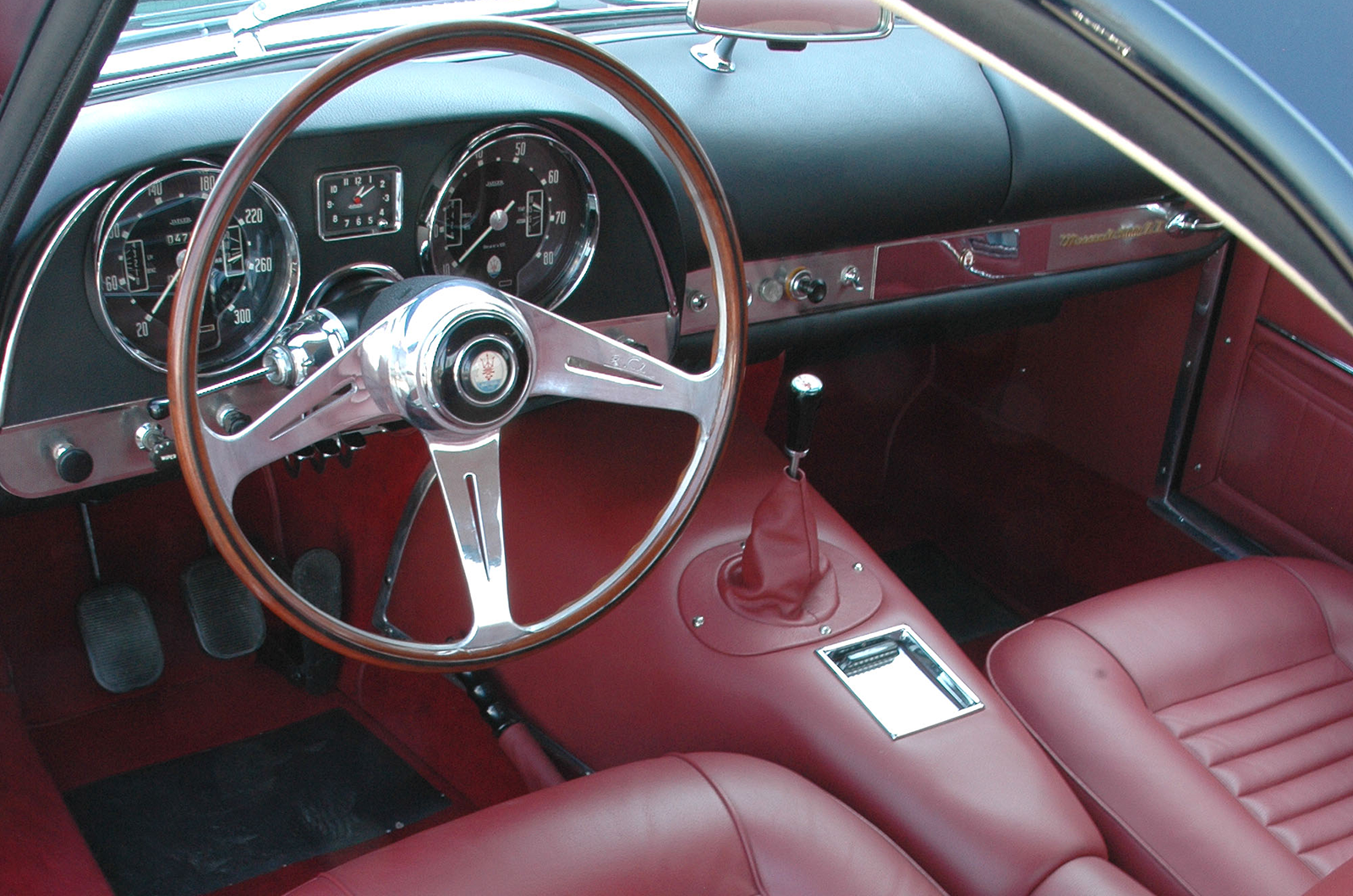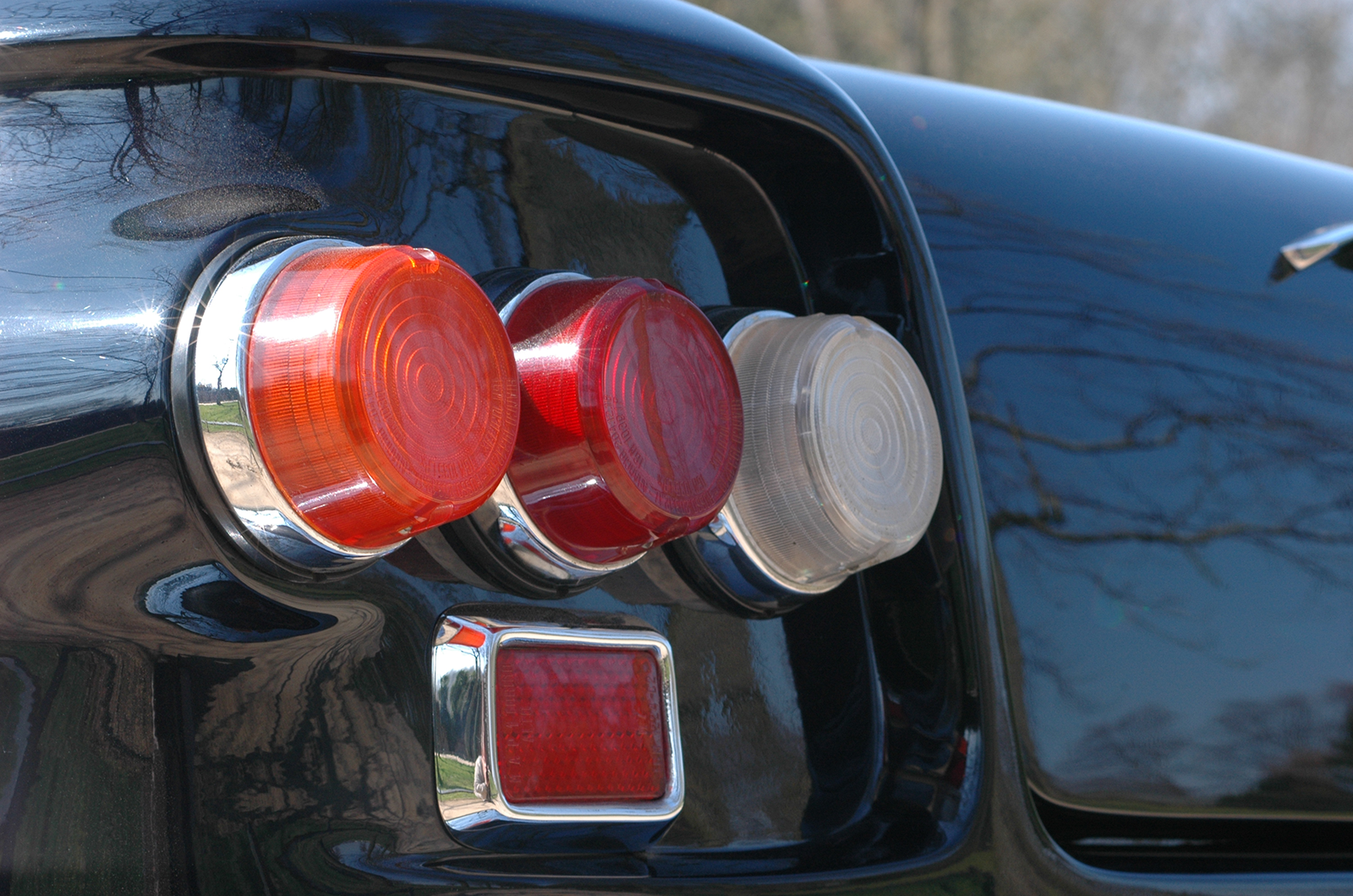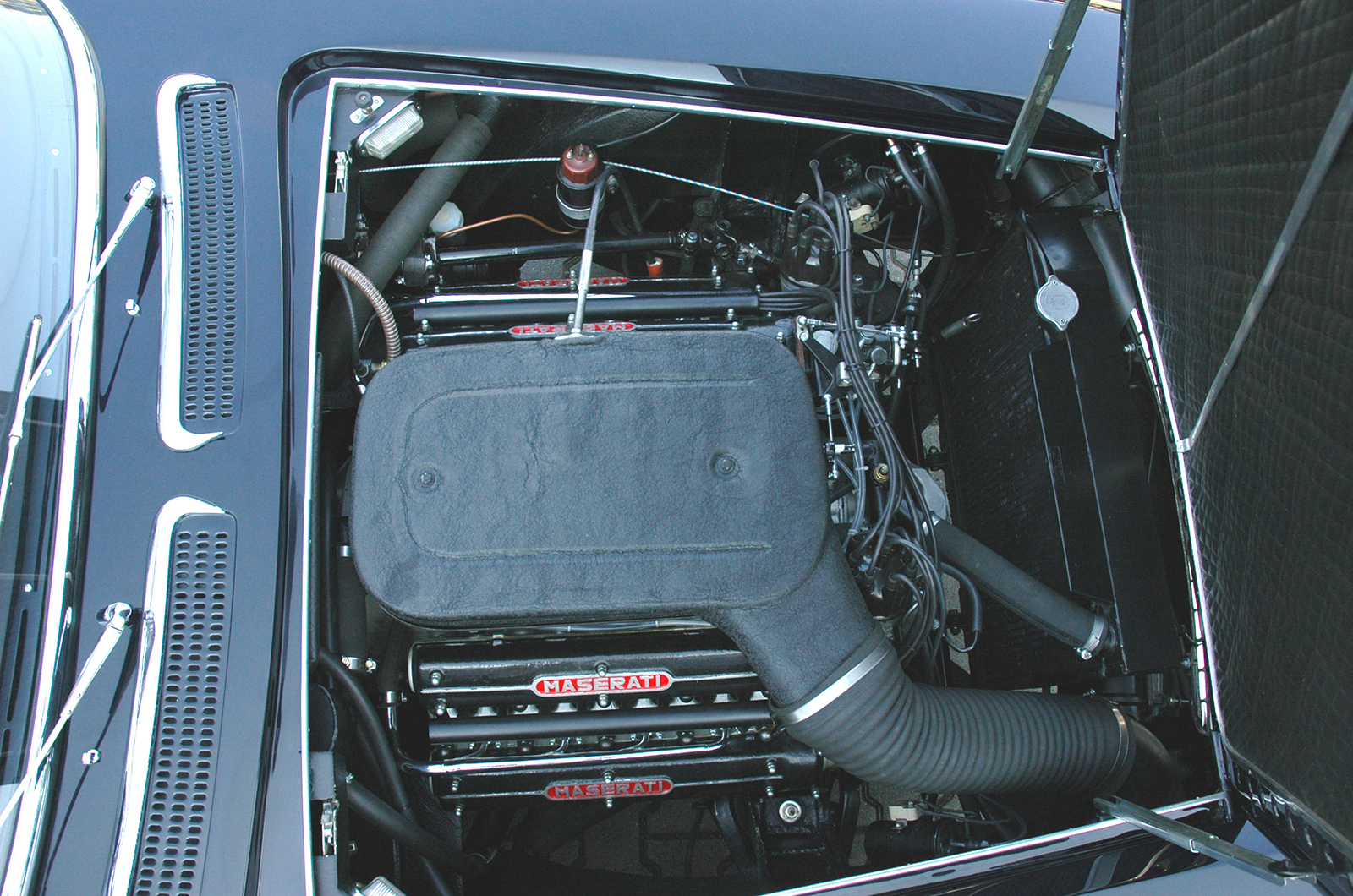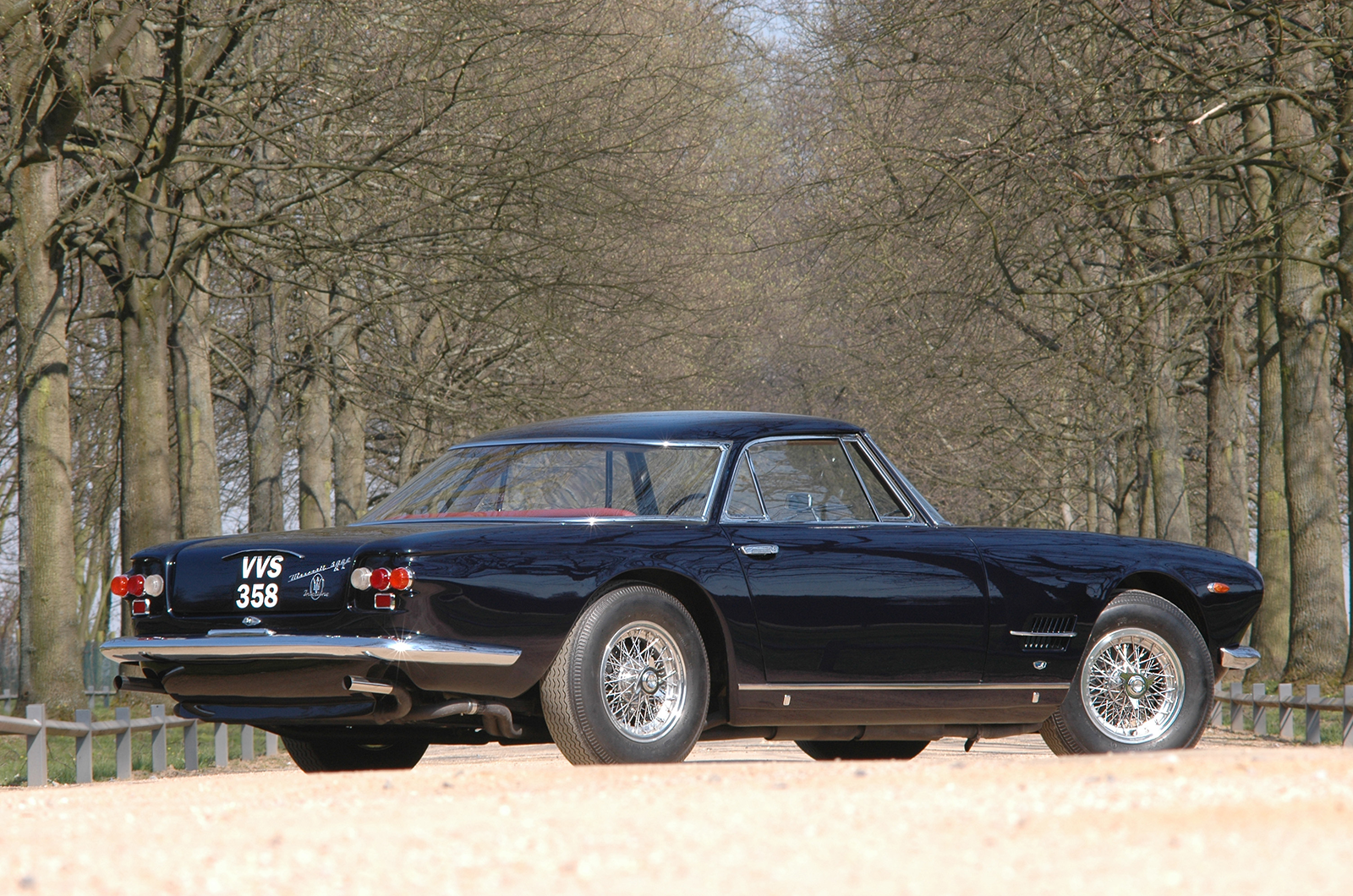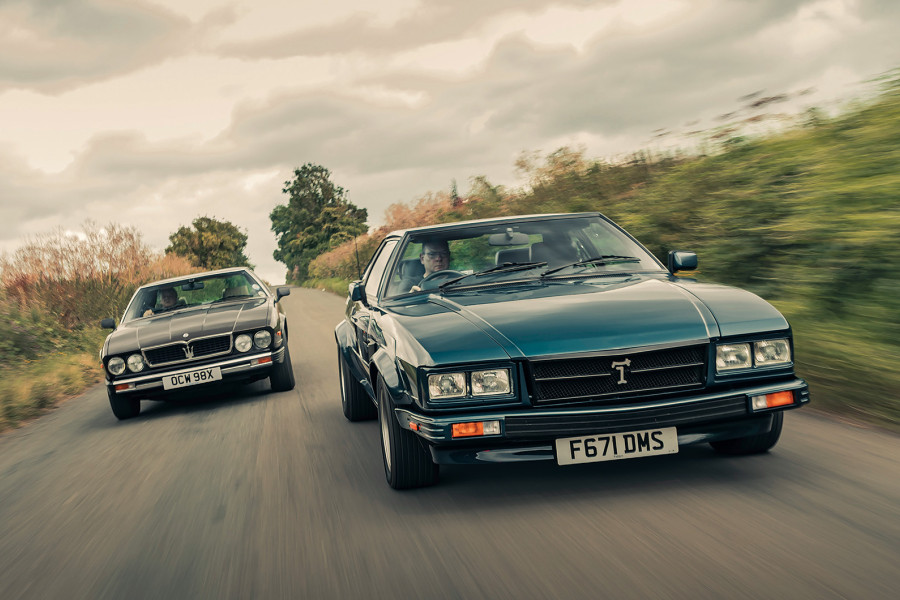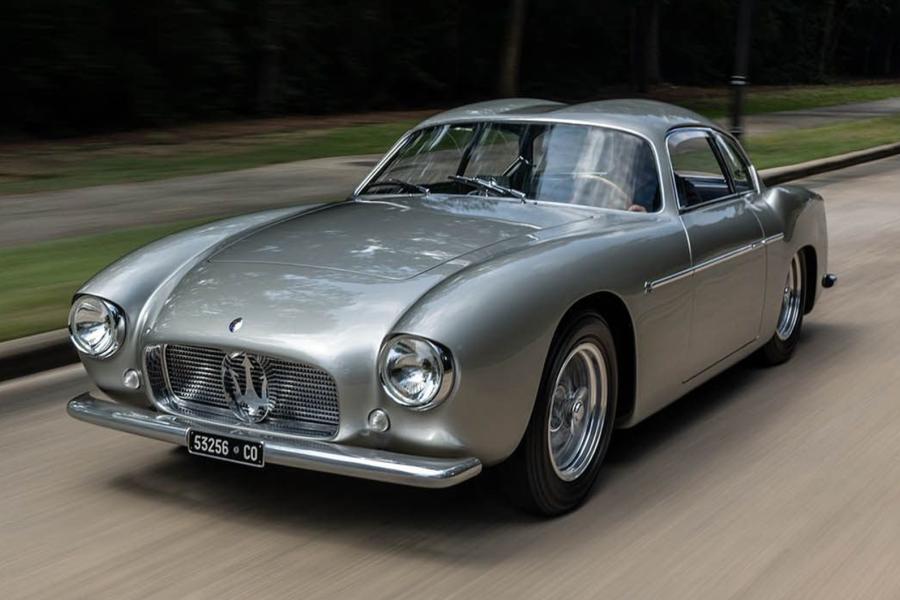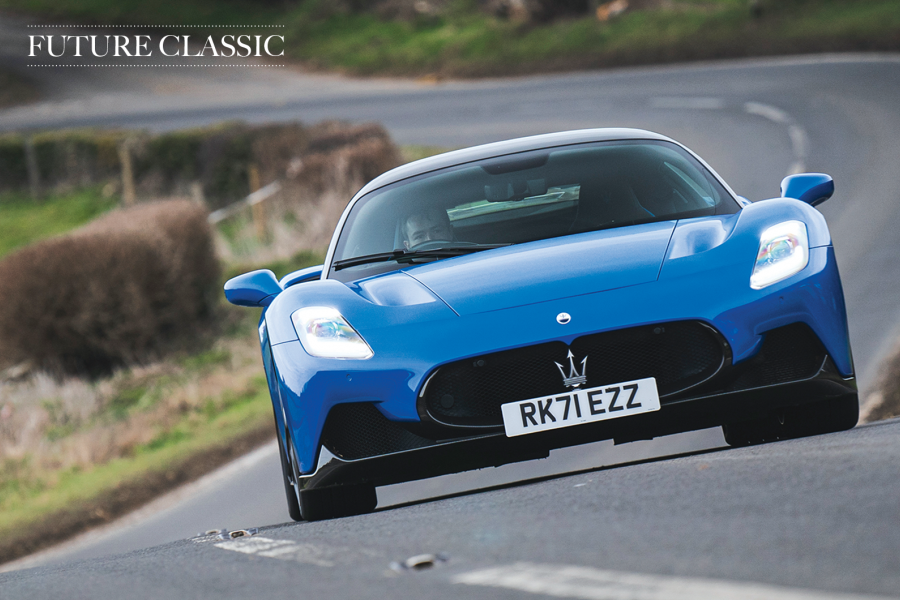A key to this refinement was Lee Muir, an ex-McLaren CanAm engineer with vast experience of the Lucas system in Detroit. Once the indirect injection was refined, the V8’s character was transformed with smooth power and gutsy low-down torque. With the 5000GT’s potential unleashed, Wild’s team set about making the car safe enough for such performance to be used: “We stiffened up the front end with recalibrated dampers, but we’re still not happy with the steering. The chassis is essentially the same as a 3500GT, but with extra reinforcement. Maserati was concerned about the extra weight of the V8 so adjusted the steering box ratios to lighten the load. As a result it’s not direct enough for the performance.”
Ever the perfectionist, Wild is keen not to change the character of the car.
5000’s sorted handling
Time to try the sorted 5000GT. Of all the bodies, Allemano’s is most common with 22 built, but it is also the most alluring.
Its long, sleek flank and wraparound glass top with slim pillars accentuate the bonnet length. The Studebaker-style panoramic rear window is steeply raked and only the rectangular headlights spoil its handsome style. Riding on expensive Borrani wires, it looks unmistakably Maserati.
Inside the bright glassy cockpit there’s nothing flash about the fittings – quality leather and brushed stainless trim, bold Jaeger dials and broad Nardi wheel with angled spokes so the pilot can clearly see the speedo and rev counter.
When I take over the wheel, the muscular 5-litre is already warm and Wild insists I use all the revs up to 6000rpm. Frustratingly, we’re not heading for the autobahn but some clear country roads and through the town the 5000GT is easy to drive with its silky low-geared steering.
Rush the ZF gearchange and it’ll grate, but once you are in tune with its timing, the action is precise. The clutch is heavy and requires a hefty push but, with so much torque in reserve, the car will cruise easily even if you wrong-slot. The brakes lack feel, but I’m assured that when you really push they transform and bite hard.
First impressions are of a superb ride – even over pavé – a taut chassis and minimal steering kickback. Once on the open road I finally get the chance to unleash the engine’s glorious power. From an edgy rumble as we slow for a clear stretch, I bury the throttle and the car lets rip a Wagneresque exhaust crescendo.
The 5000GT lunges forward with a glorious growl exclusive to exotic V8s. The engine seems to have a triple range when gunned hard: deep burble builds to vibrant growl before a resounding roar as power peaks.
The sensational acceleration rapidly reels in the next junction just as I change into third at 100mph. Even so, there feels much more in reserve and it’s easy to believe that 170mph is within the 5000GT’s grasp.
Irritating as the myriad junctions are, you do get to play Behra in a 450S at every stop thanks to that ferocious power punch and blood-curdling exhaust.
Giovanni Michelotti styled the Allemano body
All my cynicism over Hans Tanner’s 1959 figures is blasted away each time the 5000GT roars off. All that’s needed now is a Ferrari Superfast for the ultimate supercoupé shootout. Gianni Agnelli had both, fitted with near-identical Pininfarina bodywork, but it’s not recorded which he enjoyed the most.
After this spectacular work-out we cut back on a twisty route to Capricorn’s workshop. Through the turns the nose understeers when you enter too quickly, and the steering starts to feel sleepy. The short, flat seats also offer limited support through the turns, but these are minor quibbles.
Like so many Maseratis this is a bargain compared to rival Ferraris, even after a hefty bill for sorting that wild motor. The king of super-exotic GTs? No question.
READ MORE
Treasures of the magnificent Maserati collection
Dream drive: Alfa Romeo Duetto 1600
14 classic dashboards you’d never see in a modern car
Mick Walsh
Mick Walsh is Classic & Sports Car’s International Editor
